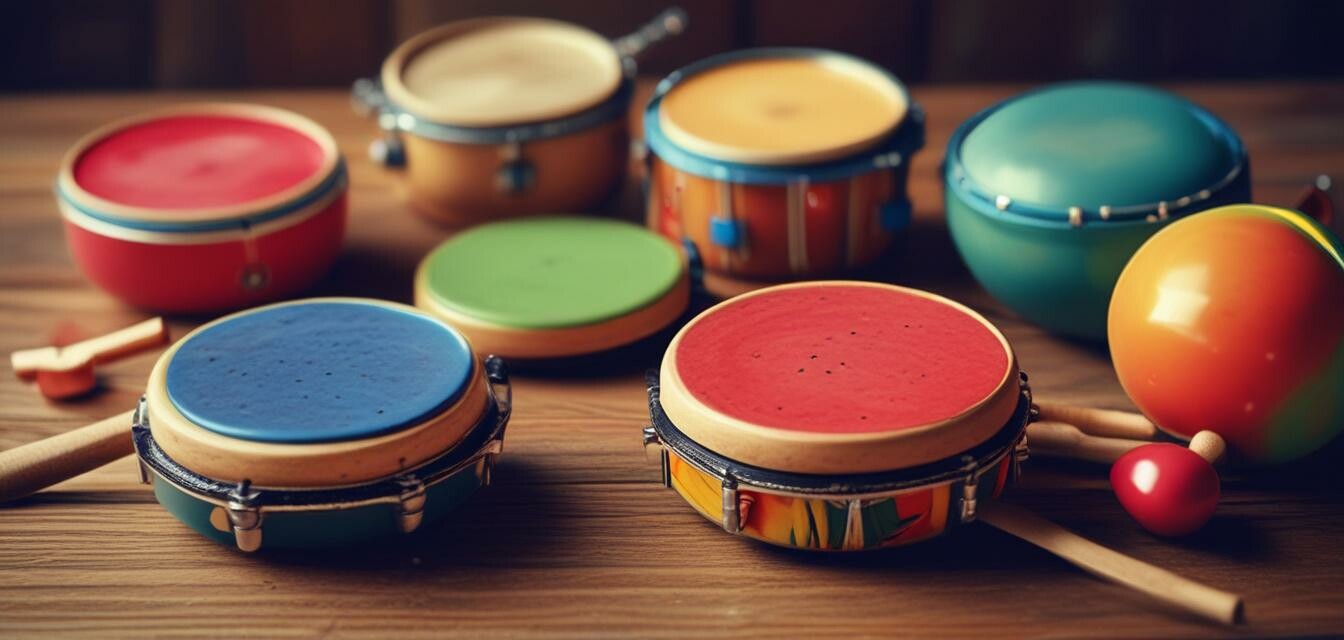
Choosing the Right Hand Percussion Instruments for Kids
Key Takeaways
- Consider the child's age and physical ability when choosing instruments.
- Hand percussion instruments enhance coordination and rhythm understanding.
- Look for durable, child-friendly materials.
- Focus on instruments that are easy to play and hold.
- Encourage exploration and creativity through music.
Choosing the right hand percussion instruments for your child can be an exciting yet overwhelming task. With so many options available, it's essential to find instruments that are age-appropriate, safe, and fun. This guide will help parents navigate the world of hand percussion, focusing on selections that enrich musical development in children.
Benefits of Hand Percussion Instruments for Kids
Hand percussion instruments have numerous benefits for children's musical development. Here are some of the key advantages:
- Enhances motor skills: Playing percussion requires coordination and fine motor skills, helping children develop these essential abilities.
- Improves sense of rhythm: Hand percussion teaches children about timing and rhythm, fundamental aspects of music.
- Encourages creative expression: With hand percussion, kids can experiment with sounds and develop their unique musical voices.
- Promotes social interaction: Group play and music-making foster teamwork and communication among children.
Age-Appropriate Percussion Instruments
Instruments for Toddlers (Ages 1-3)
For the youngest children, consider these options:
- Maracas: Lightweight and easy to hold, maracas allow toddlers to shake and create sound.
- Bells: Small hand bells are perfect for little hands and introduce concepts of beat and rhythm.
- Hand drums: Soft, lightweight hand drums can be both played with hands or soft mallets.
Preschool Age (Ages 4-5)
As children grow, they can handle slightly more complex instruments:
- Tambourines: These are fun and engaging, offering both sound and visual excitement.
- Hand clappers: Simple but effective for rhythm, hand clappers encourage participation.
- Colorful rhythm sticks: Great for striking together to create a variety of sounds and rhythm patterns.
Early Elementary (Ages 6 and Up)
For school-aged children, consider these more structured options:
- Bongos: These are great for developing hand drumming techniques and are often available in smaller sizes for children.
- Frame drums: These are easy to hold and offer a variety of playing techniques.
- Conga drums: Conga drums promote physical activity and coordination, suitable for kids eager to engage in rhythm.
Materials to Consider
When selecting hand percussion instruments, it's vital to choose materials that are durable and safe for children:
- Wood: Natural wood is common in many percussion instruments, providing rich sound quality.
- Plastic: Many modern instruments are made of BPA-free plastic, making them lightweight and resilient.
- Fabric: Soft coverings on drums can be gentle on little hands while providing clear sound.
Choosing the Right Size and Design
It's important to find instruments that fit your child's size and strength. Look for designs that are lightweight and specifically designed for children:
| Instrument | Weight | Child-Friendly Features |
|---|---|---|
| Maracas | Lightweight | Easy grip handles |
| Tambourine | Moderate | Soft edges, colorful designs |
| Bongo Drums | Light | Smaller heads, standing feet |
Encouraging Musical Exploration
Aside from simply choosing an instrument, encourage a love for music through exploration. Allow your child to experiment with different sounds and methods of playing:
- Provide diverse instruments for them to try.
- Attend music classes or community events together.
- Incorporate music into playtime for enjoyment and learning.
Maintenance Tips for Kids' Percussion Instruments
To keep instruments in good shape:
- Wipe them down after play.
- Store them in a safe, dry place.
- Check for any damages or loose parts before playing.
Pros
- Great for developing rhythm and coordination.
- Enhances creativity and self-expression.
- Diverse instruments for different musical styles.
Cons
- Some instruments may be too complex for younger kids.
- Durability varies based on material and brand.
Final Thoughts
Choosing the right hand percussion instrument for your child involves considering their age, ability, and interests. By providing them with appropriate options, you help lay the groundwork for their musical journey. For more information on musical instruments overall, check out our Buying Guides category. You can explore various types of instruments in our Instrument Accessories or Percussion Instruments sections.